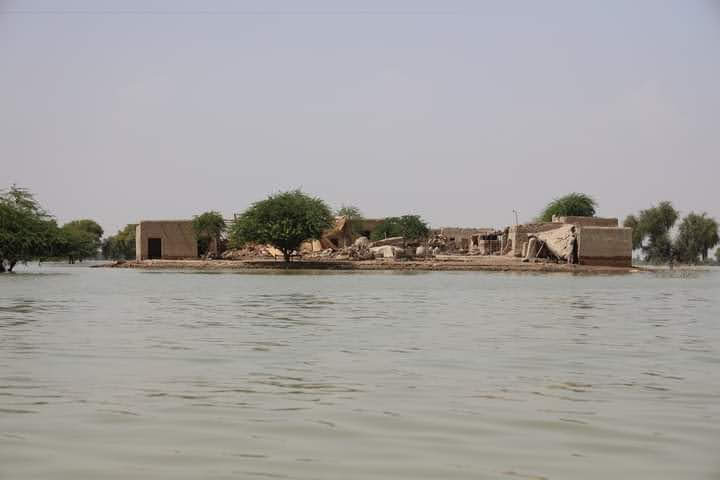
The country, as a whole, lacks an orchestrated water management system, there, nevertheless, are some small but valuable efforts aimed at countering the urban flooding and drought through recharging the groundwater.
A recent visit to several flood-battered districts of Sindh and Balochistan suggested that things are fast moving from bad to worse as the secondary disasters are plaguing the poor victims who have been living in squalor and diseases.
By Aamir Latif
Until a couple of decades ago, monsoon was feted with dance and songs in rural Pakistan. It was enshrined in poetry, and attributed to romantic fantasies.
But, the otherwise romantic monsoon has become the second name of destruction and fatalities with its increasing ferocity, frequency, and unpredictability. It has regularly been bringing devastation and diseases with short intervals to this part of the world, especially over the past two decades.
This year has been turned out to be the worst so far. The drenching monsoon followed by super floods caused lakes and rivers to overflow, flattened hundreds of thousands of houses, washing away uncountable cattle, and damaging huge amounts of ready -to-reap crops.
The raging deluges brought a third of the country under water, aside from killing over 1,700 people, and inflicting a staggering loss of 30 billion dollars to an already sputtering economy so far since mid-June.
A recent visit to several flood-battered districts of Sindh and Balochistan suggested that things are fast moving from bad to worse as the secondary disasters are plaguing the poor victims who have been living in squalor and diseases.
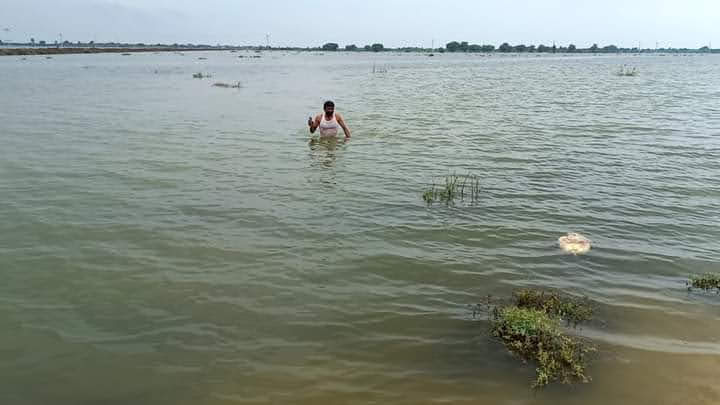 Large swathes of croplands are still under 3-6 feet water, with no hopes for immediate clearance. It means, tens of thousands of farmers won’t be able to grow wheat- a key source of their income – for next year.
Large swathes of croplands are still under 3-6 feet water, with no hopes for immediate clearance. It means, tens of thousands of farmers won’t be able to grow wheat- a key source of their income – for next year.
It is ironic that the country is “full of water” at present but after a few months, it is likely to face a drought-like situation, causing further damage to the crops and putting an extra pressure on the country’s already depleting water resources.
Despite having one of the world’s largest irrigation systems, Pakistan is an importer of wheat, lintels, and other staples as its agricultural lands shrink due to a string of factors ranging from massive floods to drought.
This lethal combination has also triggered widespread migration within Pakistan in the past decade.
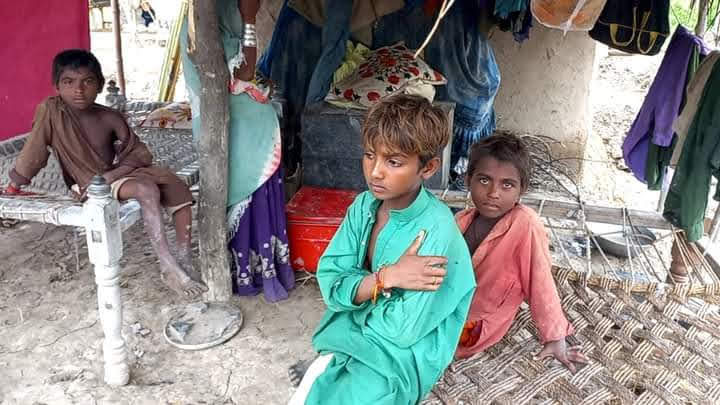 More than two million people were displaced by floods that inundated one-fifth of the country in 2010, triggering mass migration to cities from rural Pakistan. Of that figure, almost 70% did not go back to their hometowns and permanently settled in big cities to make a living because of the destruction to their homes and farmlands, according to the Ministry of Climate Change.
More than two million people were displaced by floods that inundated one-fifth of the country in 2010, triggering mass migration to cities from rural Pakistan. Of that figure, almost 70% did not go back to their hometowns and permanently settled in big cities to make a living because of the destruction to their homes and farmlands, according to the Ministry of Climate Change.
How long will it continue? The answer is very simple i.e. until the country has a modern water governance system.
There could be different voices over ways of handling the floods and rainwaters, nonetheless the water experts are of a unanimous view that a proper water management system is the only way to mitigate the devastating impacts and aftermaths of rains and floods, which are likely to continue to strike Pakistan in years to come with short gaps.
Already melting glaciers are the primary target of climate change, mainly the rising temperatures, which will lead to acute water shortages and subsequently, hit agriculture and biodiversity in the region.
Pakistan is among the top ten countries vulnerable to the challenges relating to climate change and global warming, although its share in release of fossil fuels is less than 1 per cent.
The country is annually losing more than $4 billion due to climate change disasters.
Islamabad takes credit for its much-publicized battle against the simmering climate change challenges, including ex-premier Imran Khan’s ambitious “10 Billion Tree Tsunami” project, which aims to restore the country’s fast-depleting forest cover.
For many environmentalists, nevertheless, it would not change much in terms of global warming as the Countries like Pakistan, which have a very minor share in the destruction of the environment.
Countries like Pakistan cannot do much to minimize the impact of climate change and global warming.
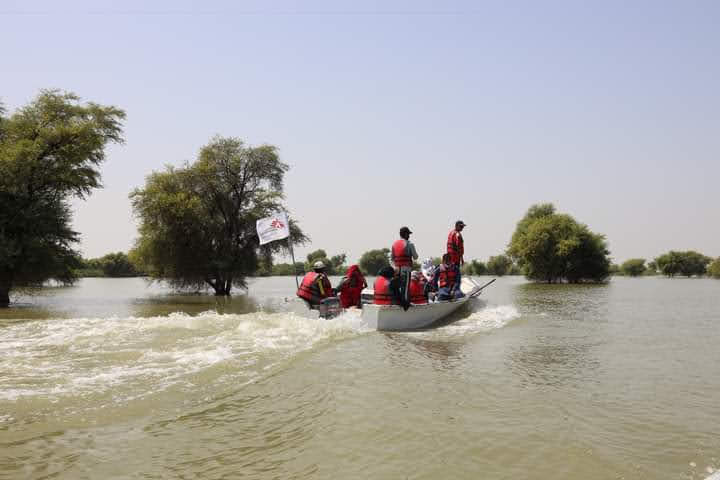 What they can do is to adopt the modern ways of water governance to not only minimize the devastations caused by regular floods and droughts in terms of human lives, infrastructure and food security.
What they can do is to adopt the modern ways of water governance to not only minimize the devastations caused by regular floods and droughts in terms of human lives, infrastructure and food security.
Certainly, the country, as a whole, lacks an orchestrated water management system, there, nevertheless, are some small but valuable efforts aimed at countering the urban flooding and drought through recharging the groundwater.
The key feature of these efforts is a groundwater recharge wells technology, which experts reckon, should be adopted as a national policy to counter urban flooding and ensuing drought due to climate change.
The groundwater recharge well is a cost-effective nature-based solution to revive aquifers and mitigate the risk of urban flooding through the most modern indigenous technology available.
There are several methods used to artificially recharge groundwater aquifers, including redirecting water across a land surface through streams, infiltration ponds, or simply injecting water directly into the ground through injection wells.
The Institute of Urbanism, International Water Management Institute (IWMI), Pakistan Council for Research on Water Resources (PCRWR) and Heinrich-Böll-Stiftung (HBS) have joined hands to push the idea of groundwater recharge that, experts agree, is need of the hour.
The Capital Development Authority (CDA) is establishing 100 recharge wells, if which 50 have been already operating, in Islamabad to conserve rainwaters and reduce the frequency of urban flooding.
These 50 recharge wells, according to PCRWR, have conserved 10 million gallons water, resulting in replenishing the groundwater but also reducing flooding in Rawalpindi’s Nullah Lai, which has long been the focal point of a flamboyant Shaikh Rashid Ahmed.
If this 10 million gallons of water was dumped into Nullah Lai then it would have resulted in urban flooding and inundation of roads and streets to an alarming level.
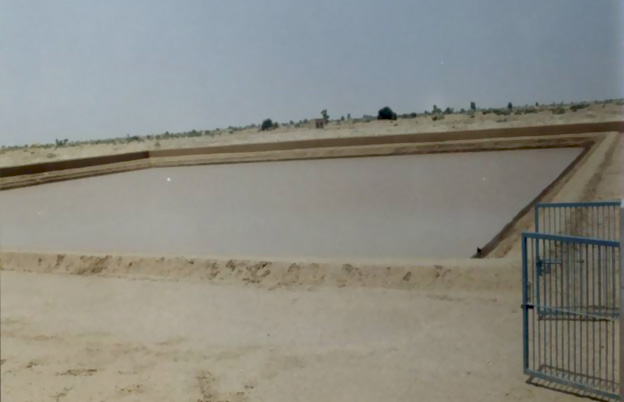
The PCRWR reports that if only 50% of the runoff from the urban area (220 km2) could be effectively harvested, groundwater recharge equal to the present shortfall of about 200 MGD could be achieved. The council has also established a network of rainwater harvesting system in the Cholistan desert where 110 rainwater harvesting reservoirs have been established each with a capacity of four million gallons.
According to Dr. Mohsin Hafeez, the IWMI’s Country Director and Regional Representative for Central Asia, his organization is helping CDA in implementing it on 100 sites.”
The water recharge level in the federal capital, he said, was 130-150 millimeters in 1990 which remained the same in 2021 despite a rapid spike in population and urbanization.
Established at the capital’s sprawling Kachnar Park, an artificial recharge well – the CDA’s pilot project- has helped improve 4.5 mm water table.
From May to September, the capital received 78mm rainfall, and 1.9 million gallons of rainwater was conserved on this site.
Similarly in Lahore, a rainwater harvesting site has been established at Bagh-e-Jinnah with an underground water storage capacity of 1.4 million gallons.
The water is later used for watering greenbelt plantations across the city.
Construction of another two underground water tanks is underway at Sheranwala Gate and Alhamra Arts Council to store rainwater, causing flooding on the city thoroughfares.
These numbers may sound small but the coalition involved in this campaign is committed to transforming it into a national movement, whereby the groundwater recharge well should be an integral part of building by-laws of public buildings including academic institutions, private housing societies and industries and green belts. Thank you IU, IWMI, PCRWR and HBS.
_________________
The writer is a senior journalist and works for Turkiye’s Anadolu Agency